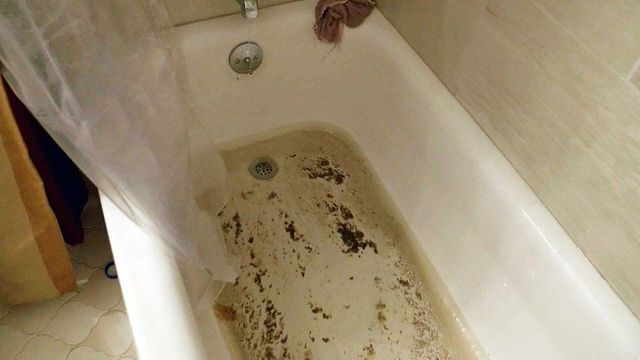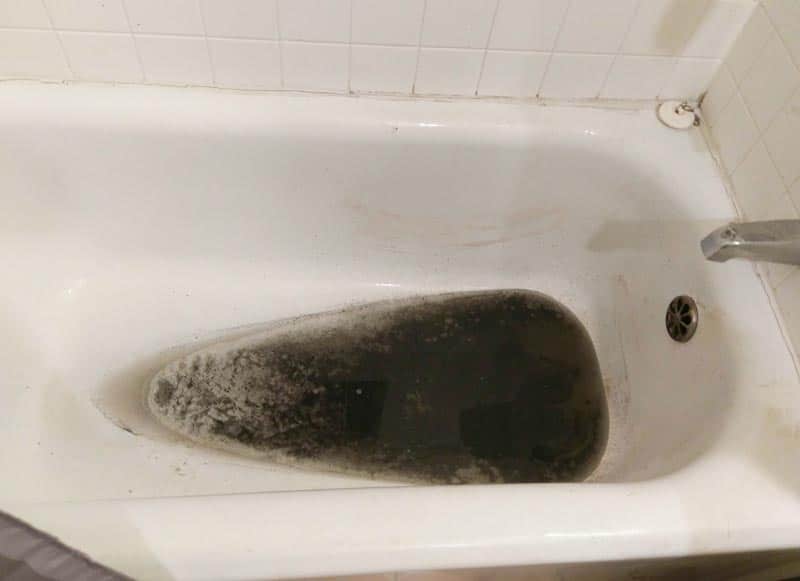Presented here underneath yow will discover additional awesome details involving What To Do If Sewage Starts Backing Up Into the Shower.

Sewer backup in the tub can be a distressing and unhygienic problem for any kind of property owner. Not just is it inconvenient, however it additionally positions severe wellness risks and suggests underlying problems with the plumbing system. Recognizing why sewage is coming up through the tub is critical for taking appropriate action to address the problem efficiently.
Introduction to the Issue
Common Reasons for Sewage Back-up
Clogs in the Sewage System Line
Among the most usual causes of sewage back-up is an obstruction in the sewer line. This can happen because of the accumulation of particles, grease, or foreign things in the pipes, avoiding correct flow and causing sewer to back up right into your tub.
Tree Origin Invasion
Tree origins seeking wetness and nutrients can infiltrate sewage system lines with small fractures or joints. Over time, these roots can grow and increase, triggering substantial damage to the pipelines and bring about sewage backup concerns.
Understanding the Trouble
When sewer starts backing up into the tub, it's a clear sign of a problem with the drain system. The wastewater that needs to be moving away from your home is instead locating its back right into your living space, which can result in considerable damage and health hazards.
Prospective Reasons
A number of factors can add to sewer back-up in the bath tub. From blockages in the sewage system line to issues with the plumbing framework, recognizing the origin is important for finding a remedy.
Aging Infrastructure
Older homes may have dated plumbing systems that are more susceptible to rust, splits, and deterioration. As pipes age, they end up being more prone to leakages and clogs, increasing the probability of sewer back-up incidents.
Heavy Rainfall or Flooding
Throughout periods of heavy rainfall or flooding, the drain system might become overloaded with excess water, creating backups and overflows. This can cause sewer supporting right into bathtubs and various other fixtures inside the home.
Signs of Sewage Backup
Foul Odors
Undesirable odors emanating from drains or fixtures, specifically in the washroom, may suggest sewer backup issues. These smells are frequently solid and relentless, signifying an issue that needs instant attention.
Slow Draining Fixtures
Bath tubs, sinks, and bathrooms that drain slowly or otherwise in all could be experiencing sewer back-up. If several components are impacted simultaneously, it's likely that the issue stems from a common point, such as the major sewage system line.
Gurgling Sounds
Strange gurgling or bubbling sounds coming from drains pipes when water is running somewhere else in the house are indicative of air entraped in the plumbing system. This air buildup can arise from sewage backup and must be checked out immediately.
Health Dangers Related To Sewage Backup
Contamination of Water System
Sewage backup can pollute the water in your home, posturing a serious health and wellness danger to you and your family. Exposure to contaminated water can result in intestinal issues, skin infections, and other diseases.
Mold Growth
Moisture from sewer backup can produce optimal problems for mold and mildew growth in your home. Mold and mildew spores can worsen respiratory problems and trigger allergies in sensitive individuals, making punctual cleaning essential.
Spread of Condition
Sewage contains damaging bacteria, viruses, and parasites that can create a series of diseases, including liver disease, cholera, and gastroenteritis. Coming into contact with sewage or contaminated surfaces puts you in danger of infection.
Tidying up After Sewer Back-up
Sanitation Procedures
Extensively decontaminate and sterilize affected locations after sewage back-up to eliminate unsafe germs and avoid mold and mildew growth. Usage suitable cleansing products and protective gear to make sure safe and effective cleanup.
Reconstruction of Impacted Areas
Repair any kind of damages to flooring, wall surfaces, or components caused by sewage backup. Relying on the extent of the damages, you may require to change carpets, drywall, or other materials to recover your home to its pre-loss problem.
Immediate Actions to Take
Shutting Off Supply Of Water
In the event of sewer back-up, it's necessary to turn off the water system to prevent more contamination and damage. Locate the major water shutoff valve in your home and shut it off up until the issue can be settled.
Getting In Touch With a Specialist Plumber
Taking care of sewer back-up is not a DIY job. Get in touch with a licensed plumber with experience in dealing with sewage-related problems to analyze the situation and carry out needed repair services or cleanings.
Staying Clear Of Contact with Contaminated Water
Until the sewage backup is fixed, stay clear of contact with contaminated water to avoid the spread of bacteria and pathogens. Use protective equipment if you should be in the afflicted area and clean your hands extensively later.
Safety nets
Regular Maintenance of Sewage System Lines
Arrange normal evaluations and maintenance of your sewage system lines to identify and address prospective issues before they rise right into major problems. This can include clearing out particles, inspecting for tree root intrusion, and repairing any type of damaged pipelines.
Mounting Backwater Valves
Take into consideration installing backwater valves in your plumbing system to prevent sewage from flowing back into your home during periods of heavy rainfall or flooding. These valves immediately close when water draws back up, protecting your home from contamination.
Correct Disposal of Household Waste
Stay clear of purging anything besides toilet tissue and human waste down the bathroom to avoid obstructions and clogs in the sewage system line. Dispose of grease, oil, and various other family chemicals correctly to decrease the danger of plumbing issues.
Why Is Water Backing Up in My Bathtub When I Flush My Toilet?
What to do about a sewer line clog
First, don’t bother with plunging. No amount of plunging will dislodge the clog in a sewer line. The clog is too far away. Plungers are for clogs in the toilet itself, not the sewer line. Plus, the most likely causes of a sewer clog are:
- Tree roots
- Flushed toys or feminine products
- Grease buildup
Those items don’t move easily. And in the case of tree roots, the roots need to be cut out of the pipe and the pipe will need to be repaired.
You’ll need a closet auger. A closet auger is a type of plumber’s snake with a protective cover to keep from scratching the delicate porcelain toilet. If the clog is further down, you may need to remove the toilet or use one of your cleanouts to get to the clog.
We also recommend doing a video inspection of the drain to ensure that the cause of the clog has been completely removed. Otherwise, you could have the same problem again in a few days or weeks.
https://mspplumbingheatingair.com/blog/why-is-water-backing-up-in-my-bathtub-when-i-flush-my-toilet

As a serious reader about , I thought sharing that excerpt was really useful. Are you aware of another person who is very much interested in the subject? Please feel free to share it. Many thanks for your time. Please come by our blog back soon.
Visit The Following Page
Comments on “Deciphering the Mystery of Discharge in the Bathtub”